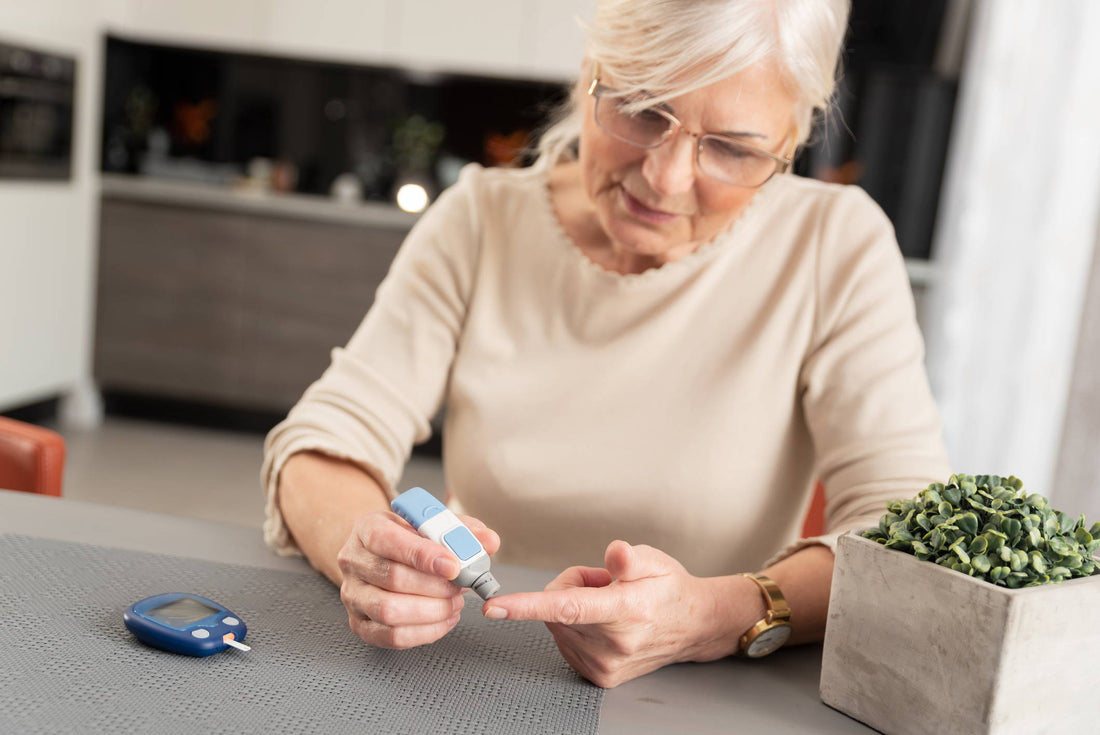In this article:
- Understanding diabetes
- Why does diabetes affect hair growth?
- Is hair loss from diabetes reversible?
- Steps to regrowing your hair with diabetes
Understanding diabetes
Diabetes is one of the most common chronic health conditions in the United States. The rise in type 2 diabetes can be attributable to many different factors, but our sedentary American lifestyle coupled with poor dietary choices can increase one’s risk for developing this condition.
Too much blood glucose in your body leads to these two primary problems that cause diabetes:
- Firstly, the pancreas does not produce enough insulin, a hormone that helps move sugar from your blood to your cells.
- Secondly, your cells become desensitized to insulin, meaning they take in less sugar.
Type 2 diabetes is most commonly diagnosed in older adults, but we are seeing a trend with younger adults and even children being diagnosed with it as obesity rates rise.
Common symptoms of diabetes include:
- Increased thirst and hunger
- Frequent urination
- Fatigue
- Unintended weight loss
- Frequent infections and slow-healing wounds
- Tingling and numbness in the hands and feet
- Vision changes
- Hair loss all over the body
There is another form of diabetes called type 1 diabetes. In this condition, autoimmune processes lead to the destruction of the cells in your pancreas that help make insulin. This type of diabetes is less common and is often diagnosed in children and adolescents, although it can be diagnosed later in adulthood as well.
Both type 1 and type 2 diabetes have the potential to lead to hair loss, although hair thinning is more widespread in individuals with type 2 diabetes.
Why does diabetes affect hair growth?
Uncontrolled diabetes can lead to excess amounts of sugar (or glucose) circulating in your blood. Too much glucose can damage your tissues and organs, including your blood vessels. Indeed, many of the symptoms of uncontrolled diabetes, like poor vision and slow healing wounds, are because blood vessels are damaged and unable to transport oxygen and nutrients effectively to nourish your tissues.
Just like our eyes and kidneys need good blood flow, our hair follicles do as well. Without oxygen and nutrients like iron, protein, and vitamins, we cannot support new hair growth. We also cannot maintain the hair we have, which can cause it to become brittle and fine. What is more, diabetes places your body under immense stress, which can further exacerbate hair loss.
One of the telltale signs that a person has diabetes is that they often have little to no hair on their legs, feet, and arms. Again, this is because there is not a sufficient enough supply of blood flow to nourish the skin and hair follicles. For this reason, many people with diabetes also have pasty, pale skin.
Bring your hair back to its shining glory
Is hair loss from diabetes reversible?
Type 2 diabetes cannot be cured. However, hair loss from this condition may be reversible if you follow the proper treatment steps.
The best thing you can do for your hair (and, more importantly, your overall health) is treat your diabetes. Diabetes is most often diagnosed with a blood test called Hemoglobin A1c. This test measures your average blood sugar level over the past three months. Of course, many people are also diagnosed with diabetes because of the symptoms they are experiencing or they have a severe episode of illness where their blood sugar is either too high or too low. While both situations are dangerous, low blood sugar is far more critical and requires immediate medical attention.
Steps to regrowing your hair with diabetes
As stated above, treating your diabetes is crucial to restoring hair loss. Follow your doctor’s instructions with medications, diet changes, and blood sugar checks to ensure your glucose remains stable.
Meet with a nutritionist that specializes in helping people with diabetes so you can learn what to eat and in what quantities.
Work on lifestyle changes that help with stress reduction and weight loss, as too much stress and excess weight can place a burden on your body (and hair).
Don’t hesitate to start treating your hair loss with products that help increase blood flow in your scalp. Products that contain 5% Nanoxidil are the best topical solutions that can help jumpstart and maintain new hair growth.
Every time you wash your hair is also an opportunity to help with hair growth. Use a shampoo and conditioner system like the REVITA line that gently cleanses while reducing inflammation and increasing circulation.
If you are struggling with hair loss from diabetes, browse the various options for hair regrowth at DS Laboratories. Our products are made by a dermatologist and scientists who are passionate about treating the root causes of hair loss with the best ingredients. And if you are not sure where to begin, talk with one of our Product Advisors to get a hair growth plan made specifically for you.

